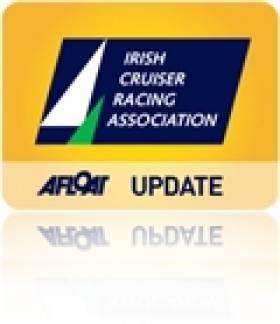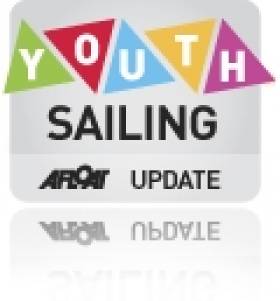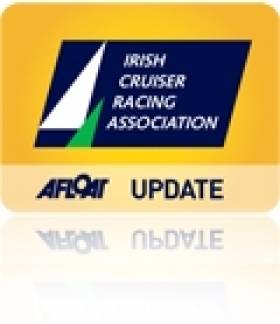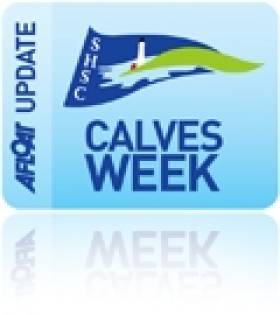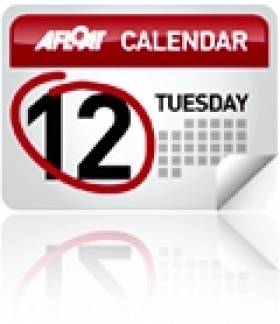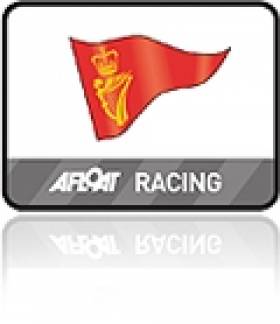Displaying items by tag: notice of race
ICRA Cruiser National Championships 2015, Kinsale Yacht Club. Download 'NOR' Here!
#cruiserracing – The 2015 ICRA cruiser national championships will be sailed in conjunction with Kinsale Yacht Club's Sovereign's Cup regatta, the Cruiser–Racer conference heard at the weekend. Eight races are planned over four days.
The full Notice of Race for the Wednesday June 24 to Saturday, 27th event has been published and is available to download below as a PDF document and details are below. A Notice of Race for the White Sails Cup is also downloadable below.
ICRA NATIONALS & SOVEREIGN’S CUP 2015
1 ORGANISING AUTHORITY [OA]
1.1 The Organising Authority (OA) is Kinsale Yacht Club in conjuction with the Irish Cruiser Racing Association (ICRA)
1.2 The Event is the ICRA Nationals and Sovereign's Cup 2015 and incorporates the Irish 1/4 Ton Cup.
1.3 For more information contact regatta drector on: +353 21 4773 433 email: [email protected]
2 RULES AND ELIGIBILITY
The Event is governed by the Racing Rules of Sailing (RRS) of the International Sailing Federation (ISAF), the prescriptions of the Irish Sailing Association (ISA), the IRC Rating Rule parts A-C, the ISA ECHO Performance Handicap System, the rules of ICRA, the Quarter Ton class rules
Safety: The regatta is an ISAF Category 5 event. The OA reminds all persons in charge of their obligations in this regard. Copies of the Special Regulations are available from the ISAF website at www.sailing.org
2.1 To be eligible to compete in the Event boats shall, except when sailing under Quarter Ton Class rules
2.1.1 Comply with the definition of a cruiser in the ICRA Constitution;
2.1.2 Have an IRC rating or ECHO standard within the range .800 to 1.250;
2.1.3 Comply with the relevant IRC rating and ECHO handicapping rules
3 ADVERTISING
3.1. The OA reserves the right to refuse entry to the Event, if there is in its opinion, a conflict between a competitor's sponsor and the Event sponsor.
3.2. Boats may be required to display advertising chosen and supplied by the OA.
4 CLASSIFICATION
4.1 ISAF Regulation 22, Sailor Classification Code, will apply. Category 3 sailor allowance per class is set out in the table below.
It is the personal responsibility of every sailor to determine their ISAF Regulation 22 status. Apart from the exceptions set out in the table below, ISAF Group 3 competitors, including competitors who are not classified but who satisfy the requirements of the Group 3 definition, are not permitted to sail in the event. The OA may request a competing boats crew list together with related ISAF sailor IDs
4.2 Group 3 competitors are not permitted to helm except in an emergency.
4.3 Competitors who require an ISAF Classification should apply, in good time, on www.sailing.org/isafsailor
5 CREW LIMITATIONS
IRC Rule 22.4 is deleted. There is no limit on crew number or crew weight as required for boats rated as One Designs or restricted by
Class Rules.
6 DIVISIONS
6.1 Entrants will be divided into DIVISIONS which will not be finalised until after the closing date of 12th June, 2015.
6.2 The composition of divisions will be determined at the sole discretion of the OA on receipt of the entries, having regard to the following criteria:
6.2.1 The need for a reasonable number of boats in each division;
6.2.2 Having as close a spread as possible in the range of handicaps in each division.
6.2.3 Extra divisions from those used in previous years, with different breakpoints, may be created.
6.2.4 It is the intention to include a division which will group all ¼ tonners
6.3 The OA reserves the absolute discretion, in the interests of fair sailing for all competitors, to allocate any boat to any division.
7 PROGRAM OF RACES
7.1 The Skippers Briefing will be held at 1800 Tuesday 23rd June 2015 in Kinsale Yacht Club.
7.2 Racing is scheduled to be held on Wednesday 24th June to Saturday 27th June 2015.
7.3 The scheduled times of the first warning signals for each days racing will be 1155
7.4 On the last scheduled day no warning signal will be made after 1530, except in the case of a race where a postponement, abandonment or general
recall has been signalled.
7.5 Races will be scheduled to achieve a program of eight races maximum over the Event
8 SCORING & DISCARDS
8.1 The Low Point scoring system of Appendix A will apply.
8.2 Three races are required to be completed to constitute a Championship.
8.3 If 5 or more races are completed 1 discard shall apply.
9 FEES
9.1 The cut off criteria for Early Entry Fee is 14th February 2015. Closing date for entries is 30th May, 2015 unless extended by the OA.
ENTRY FEE: Early Entry By 14th April Thereafter
Over 45' to 50' E390 E410 E470
Over 42' to 45' E370 E385 E445
Over 38' to 42' E330 E345 E395
Over 32' to 38 E290 E305 E350
Over 28' to 32' E270 E285 E325
28' and under E250 E260 E300
9.2 The entry fee includes marina berthing for the competing boat from Tuesday night 23rd June to Saturday night 27th June inclusive and includes 5 additional nights that can be taken free of charge anytime during the summer of 2015.
9.3 There will be an additional fee of €50 euros per boat per lift (payable on the pier) for craning in and out facilities for boats arriving by road by prior
arrangement.
9.4 Entries may be made online through the event website
9.5 Entries are accepted at the sole discretion of the OA.
9.6 Entries are accepted for the full Championship only - boats may not enter for individual races.
10. RATINGS & HANDICAPS
10.1. IRC certificates shall be ENDORSED and have a VALIDITY DATE no later than 12th June, 2015 and are required to race in all IRC Divisions with the exception of Class 5, White Sail IRC when an unendorsed IRC certificate will suffice.
10.1.1. No alteration in a boat's TCC will be permitted after this cut-off date except as a result of a rating protest, or to correct Rating Office errors. Such errors shall be certified in writing as such by the Rating Office.
10.1.2. A boat's owner and any other person in charge shall ensure that the boat is maintained to comply with her measurement and that her rating certificate
remains valid for all races in the series.
10.1.3. If, for any reason, a boat's TCC is changed after the cut-off date above it shall be the duty of the boat's owner or any other person in charge to inform the OA of any change immediately and any increased TCC shall be applied to all races in calculating her series score. This provision is subject to 10.1.5
10.1.4. The name/s of the equipment inspector/s and/or measurer/s shall be published on the official notice board for the duration of the event [RRS 78]
10.1.5. The validity date may be extended in extraordinary circumstances at the sole discretion of the OA. The boat seeking the extension shall apply in
good time in writing setting out the grounds for the extension.
10.2. A copy of the boat's current IRC Endorsed certificate shall be included with the entry form or submitted at registration. This copy shall be available for inspection by another competitor at any time.
10.3. The OA reserves the right to inspect any boat to ensure compliance with IRC certificates.
10.4. Each entry will be assigned an initial ECHO Handicap based on current ECHO Handicap data gathered from the various handicap authorities. A
system of progressive ECHO handicapping, where each boat's handicap is automatically adjusted on the basis of performance in each race, will apply.
The act of handicap adjustment or failure to adjust will not be grounds for a request for redress. (This changes RRS 62)
11. HAUL OUT RESTRICTIONS
Boats shall not be hauled out once launched and during the Event except with and according to the terms of prior written permission of the OA.
12. PRIZES
Overall Prizes and trophies will be awarded under IRC and ECHO.
12.1 The Sovereign's Cup will be presented to the boat which in the opinion of the Regatta Committee performs to the highest standard under IRC.
12.2 The Portcullis Trophy will be presented to the boat which in the opinion of the Regatta Committee performs to the highest standard under ECHO.
12.3 A White Sail Trophy will be presented to the boat which in the opinion of the Regatta Committee performs to the highest standard under white sail
12.4 The Irish Quarter Ton Championship Trophy will be presented to the Quarter Tonner with the lowest points score under IRC.
12.5 The Michelle Dunne Prix D'elegance Trophy will be presented to the boat and crew which in the opinion of the Regatta Committee is the best turned
out at the regatta.
12.5 Final prize giving for the ICRA Nationals and Sovereigns Cup and Irish National Quarter Ton Cup Regatta will take place on Saturday 29th June in
Kinsale Yacht club.
13 REGISTRATION AND SAILING INSTRUCTIONS
All entrants shall register with the Event Office in the KYC. Sailing Instructions will be available at registration and may be posted on the event website.
Registration will take place on the following days:
Monday 22nd June 1400 – 1700
Tuesday 23rd June 1000 – 1800
14 RACING AREA & COURSES
14.1. Races will be sailed in the waters off Kinsale Harbour.
14.2. The courses to be sailed will be windward leeward or fixed mark courses.
14.3. Competitors are advised to ensure there is a working VHF radio on board each boat as the courses for the Round the Cans races may be called out on VHF.
15. ACCOMODATION & SOCIAL
15.1. Information on local accommodation is available on the Event website.
15.2. Entertainment will be provided after racing each day.
15.3. Competitors are granted temporary membership of KYC for the duration of the Event subject only to the Club rules for withdrawing or withholding
such membership.
15.4. On Friday 26th June KYC will host a Ladies lunch for the wives and partners of the competitors and their guests. Details will be available on the event web page. It is intended that all funds raised during this event will be presented to the Access Sailing Committee from KYC for the promotion of sailing amongst disabled youths at Kinsale yacht Club
16. SAFETY & DISCLAIMER OF LIABILITY
16.1. The safety of a boat and her crew is the sole responsibility of the person in charge [RRS 46] who must do their best to ensure that the boat is fully found, thoroughly seaworthy, and manned by an experienced crew who have undergone appropriate training and are fit to face the conditions encountered. The person in charge must be satisfied as to the soundness of hull, spars, sails, rigging and all gear. The person in charge must ensure that all safety equipment is properly maintained and suitably stowed. The crew must be familiar with the use and position of such safety equipment. The person in charge accepts that the responsibility for a boat's decision to participate in a race or to continue racing is theirs and theirs alone. Neither these regulations nor any action of the OA in any way limits or reduces the exclusive responsibility of the owner or the person in charge.
16.2. The wearing of personal flotation devices is strongly recommended at all times
16.3. Competitors participate in the championship at their own risk - see Fundamental Rule 4, Decision to Race. ICRA, KYC, their officers, servants and agents accept no responsibility in respect of loss of life, personal injury or loss of or damage to property sustained in conjunction with or prior to, during or after the event.
17. INSURANCE
It is a condition of entry for each boat owner to have their boat adequately insured against any risk, including civil liability to third parties and to ensure that such insurance remains valid for the entirety of the event.
18. MARINA
18.1 Marina berths will be available, free of charge, from Tuesday 23rd June until 1200 on Sunday 28th June 2015. Berths will be allocated on arrival and are subject to suitable space availability.
18.2 A limited number of marina berths will also be available from Sunday 15th June 2015. The provision of berths will be at the discretion of the OA and
advanced booking is required. Requests for an advanced berth should be made by contacting the KYC Marina Manager.
19. SPONSORSHIP
The Irish Cruiser Racing Association and Kinsale Yacht Club are very pleased to welcome Covestone Asset Management as our sponsor at this year's event.
20. MEDIA WAIVER
Competitors give their consent to the OA to use or so license the use of their name, comments, photographs and likeness as it sees fit for the promotion of cruiser racing. The OA reserves the right to use or to license the use of any images and sound recorded during the Event free of charge,
21 WHITE SAIL/NON–SPINNAKER
White sail/non-spinnaker boats please refer to addendum to this notice of race
Round Ireland Yacht Race 2014 Notice of Race (NOR) Published
Details of the 2014 Round Ireland Yacht Race from Wicklow Sailing Club have been published in good time for next summer's race starting at 2pm on Saturday, June 28th 2014. The closing date for entries is noon on 24th May 2014. The full notice of race is available to download below:
Classes will be as follows:
IRC Class CK – 0.850 and greater
IRC Class Z - 1.276 and greater Class 5 – Cruisers, Hull factor 7.5 or less
IRC Class 1 - 1.275 – 1.101 Class 6 – Classics Class (pre 1987)
IRC Class 2 - 1.100 – 1.051 Class 7 – Two handed class
IRC Class 3 - 1.050 – 1.007 Class 8 – TBA
NOR Announced For 2013 EUROSAF Youth Sailing Euros
#YouthSailing - The Notice of Race (NOR) for the 2013 EUROSAF Youth Sailing has now been released.
This marks the second occasion on which the combined classes continental championship of Europe has been organised – the first being in Aarhus, Denmark in August this year, hot on the heels of the successful ISAF Youth Worlds in Dublin Bay this summer.
Up to 200 sailors under the age of 19 from as many as 20 European countries will be competing for the accolade of European Youth Champion in Tavira, Portugal from 3-9 August 2013.
Medals will be available in each of eight different disciplines, including an open multihull event using the Sirena SL16 catamaran. Other designs of boats to be used are the Laser Radial, International 420 and 29er skiff. Windsurfing will be represented by the RS:X sailboard, as used at the Olympic Games. Each country is permitted to enter two crews in each of the disciplines.
Uniquely in terms of multi-event youth championships, the EUROSAF Youth Sailing European Championship includes medals races for the top sailors in each discipline.
In a development of the championship since Aarhus, there will also be a final race for competitors who do not qualify for the medal races. The results of these races will count towards the Nations Cup Team Trophy - currently held by Italy - which is awarded to the country with best overall results from the entire series across all disciplines.
Another new feature for 2013 will be an increase in the number of races for each class. This is being introduced as a direct result of recommendations from many of the coaches who were present in 2012.
The tendency these days is to have shorter races, so the athletes were often ashore and finished racing by early to mid-afternoon. In the 2013 event the windsurfers, multihull and skiffs will each have four races scheduled per day, while the single and double-handed classes will have three races scheduled. Racing starts on Monday 5 August and concludes on Friday 9 August.
The EUROSAF Youth Sailing European Championship will be hosted by Clube Náutico de Tavira, in association with the Federação Portuguesa de Vela and the European Sailing Federation. The host club previously organised the Portugal Youth Championship and the 420 Open European Championship, and will be the host of the ISAF Youth Sailing World Championship in 2014.
Tavira is located on the east side of Algarve, some 30km from the International Airport in Faro, and is one of the oldest towns of Algarve.
Marco Predieri, president of EUROSAF, said: "We are delighted to be taking this prestigious event to Portugal and Tavira, after the very successful championship in Denmark in 2012.
"EUROSAF are committed to building this championship into the foremost youth sailing championship in Europe each year, and we are confident that the 2013 hosts will help us move closer to achieving this objective."
The NOR is available to read or download HERE.
Eleven Races in Busy Irish Sea Offshore Schedule
Chairman of ISORA Peter Ryan sets out the 2011 programme for ISORA that kicks off on April 7th with an introductory evening on April 7th.
Spring has come and the days are getting longer. It is now time to be thinking about offshore racing again. The first race is on the 30th April from Dun Laoghaire to Holyhead.
I attach again the latest Race Schedule, Notice of Race, Conditions and Entry Form for 2011. I also attach details of the proposed "Offshore Introduction" night for offshore racing on the 7th April. Even if you are experienced, you can add to the proceedings or just come for the reception after.
There is an extensive list of eleven races in the schedule. The types of race vary greatly to give a variety of racing experiences. There are Day Races, Night Races, Short Cross Channel Races, Medium Cross Channel Races, 100 mile Lyver Trophy Race and "The Dingle Skellig Hotel D2D" – Dingle Race. There is racing for IRC, IRC No Spinnaker and 2-handed classes.
This season, if the number of entries permits, we will be running a Classic Class in both Class 1 & 2. The boats eligible for the Classic Classes will be selected by the Sailing Committee before the start of the first race and the selection will be based on the boats performance / capability during the previous season. It is hoped that this will provide a much greater spread of prizes. The rating break for Class 1 and Class 2 will be decided at the same time.
The Race schedule has been carefully selected to ensure the maximum amount of sailing and social life is obtained. The usual "get together" will take place before and after each race. This season we have some additional attractions:
If desired, the race on the 28th May from Pwllheli to Wicklow can be followed by boats taking part in the "Turbine Race" (see www.arklowsc.com on Sunday 29th. This race starts and finishes in Arklow, 10 miles from Wicklow. This will allow the usual "get together" in Wicklow on Saturday evening and another one in Arklow on Sunday after the Turbine Race. This is the UK Bank Holiday weekend and will allow the UK boats time to return home on Monday!
After taking part in the "Dingle Skellig Hotel D2D Dingle Race" on the 11th June. Please note that a second separate entry to the NYC is required if taking part in this race in the series. After a few relaxing nights in Dingle, you can wander around to take part in the "ICRA Championships" in Crosshaven before making your way to Kinsale for the "Sovereign's Cup". The Dingle Race is a qulaifier race for the Fastnet Race.
The Lyver Race on the 1st July is a Feeder Race to the Volvo Dun Laoghaire Regatta from the 7th-10th July – a great few days sailing in Dublin Bay. This race is a RORC qualifier for the Fastnet Race. Again, seperate entry is required for the Liverpool Yacht Club sections of the event.
The Sunday Race on the 14th August will take place directly after the start of the Solitaire du Figaro fleet from Dun Laoghaire. If possible we will set a course to follow the fleet down the coast. For visiting boats to Dun Laoghaire, the Figaro fleet will arrive in Dun Laoghaire on the Wednesday 10th August and there will be a festival in Dun Laoghaire for the couple of days to celebrate the event. There will be great craic in Dun Laoghaire for those days.
You may not have noticed but the ISORA website www.isora.org has been upgraded and will become very active this year. There is a "Crew Register" and a "Buy and Sell" section in the "Forum" page. I would encourage everyone to register for this facility and use it to get crew for races or for crew to get boats. Try the website out.
The "ISORA Introductory Evening" in the NYC on the 7th April. The purpose of this is to encourage those boats who are thinking of taking part in Offshore Racing by a series of talks about what is involved in this type of racing. I will also use this session to demonstrate the use of the new website's "Crew Register". I also hope to issue detailed instructions by email on the use of this facility. The session will be followed by a reception where people can solialise and relax. "Prof" O'Connell and Mick Liddy will be talking at the event. I will also be encouraging participation from the audience. It will be a great night so please come and bring a friend.
I look forward to receiving your entries very soon. I would appreciate it if you could also spread the good news about ISORA and Offshore Racing.
Ten Days of Racing on the South Coast
The ICRA National Championships is being staged at Royal Cork YC from Friday 17th to Sunday 19th June and the Sovereign's Cup at Kinsale YC from Wednesday 22nd to Saturday 25th June.
Dublin boats heading south for these events can race down to the event as part of the Dun Laoghaire to Dingle Race (it's the tenth anniversary race) from the National Yacht Club starting on Saturday, June 11th next.
Entry form for ICRA and Notice of Race available to download below.
Calves Week 2011 Notice of Race and Entry form Published
Dun Laoghaire Frostbites Celebrate 40th Anniversary Next Month
Royal Cork Autumn League Notice Of Race is Published
The Notice of Race (NOR) for the O'Flynn Exhams sponsored Autumn Regatta at the Royal Cork Yacht Club is now available to download below. The Regatta will commence on Sunday, October 3rd and will continue the exciting format that was used for the first time last year. The dates for the races are October 3rd, 10th, 17th, 24th & 30th. Entry form and NOR downloadable below.




























